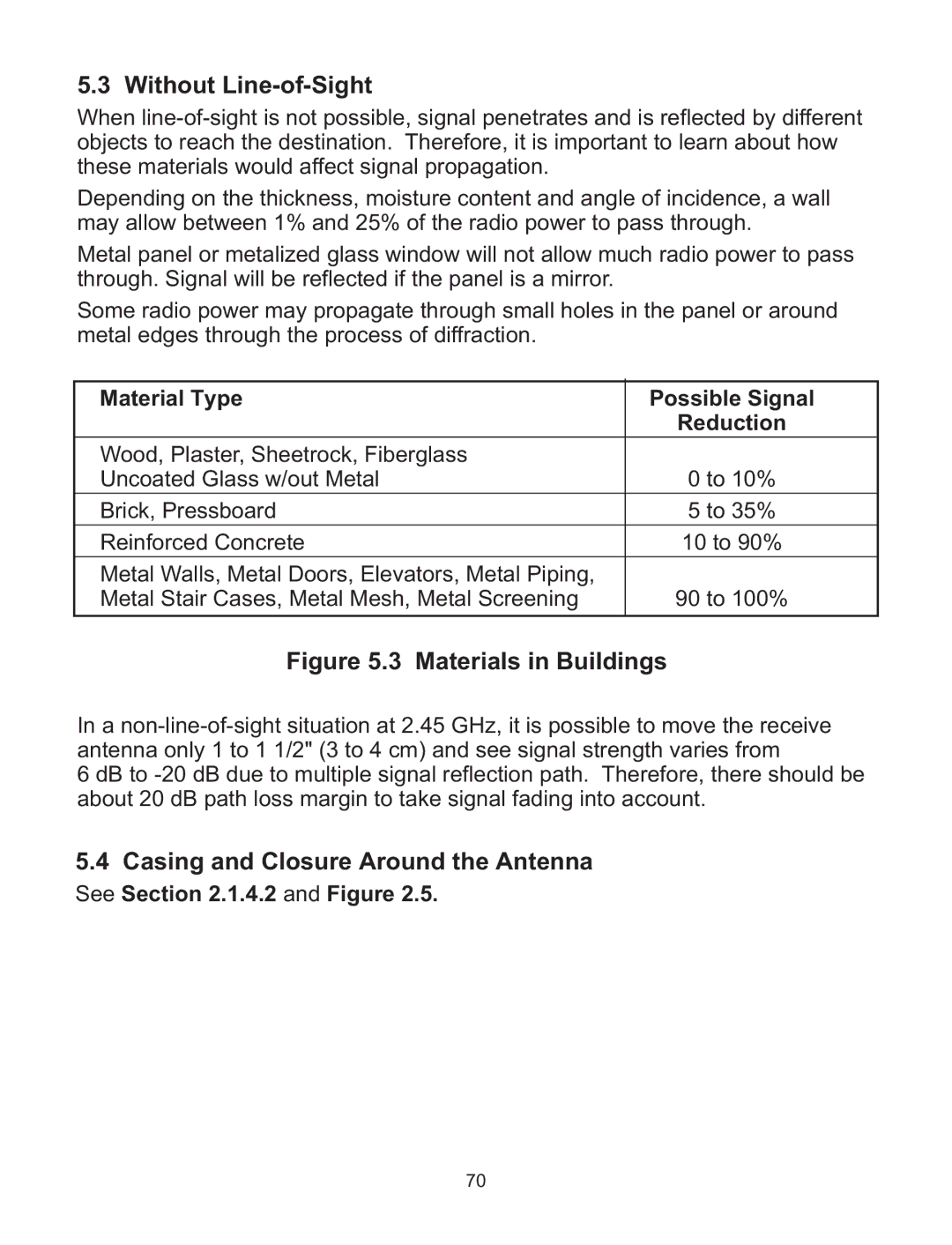
| 5.3 Without |
|
|
|
| When | |||
| objects to reach the destination. Therefore, it is important to learn about how | |||
| these materials would affect signal propagation. |
|
|
|
| Depending on the thickness, moisture content and angle of incidence, a wall | |||
| may allow between 1% and 25% of the radio power to pass through. | |||
| Metal panel or metalized glass window will not allow much radio power to pass | |||
| through. Signal will be reflected if the panel is a mirror. |
|
|
|
| Some radio power may propagate through small holes in the panel or around | |||
| metal edges through the process of diffraction. |
|
|
|
| Material Type |
| Possible Signal |
|
|
| |||
|
| |||
| Wood, Plaster, Sheetrock, Fiberglass |
| Reduction |
|
|
| 0 to 10% |
| |
| Uncoated Glass w/out Metal |
|
| |
| Brick, Pressboard |
| 5 to 35% |
|
| Reinforced Concrete |
| 10 to 90% |
|
| Metal Walls, Metal Doors, Elevators, Metal Piping, |
| 90 to 100% |
|
| Metal Stair Cases, Metal Mesh, Metal Screening |
|
| |
Figure 5.3 Materials in Buildings
In a
6 dB to
5.4Casing and Closure Around the Antenna
See Section 2.1.4.2 and Figure 2.5.
70
